Asian water monitors (Varanus salvator) are substantial, semiaquatic lizards renowned for their widespread presence across South and Southeast Asia, inhabiting diverse aquatic environments from rivers to urban canals [8, 23]. These powerful reptiles belong to the family Varanidae, typically attaining lengths between 59-79 inches (150-200 cm) and weights of 44-55 pounds (20-25 kg) [8, 20].
Their opportunistic carnivorous diet includes carrion, fish, and small vertebrates, reflecting their ecological role as essential scavengers [8, 23]. Agile in both water and on land, they exhibit bimodal diurnal activity patterns focused on foraging and basking, with an ability to move at speeds up to 15 miles per hour (25 km/h) on land and 9 miles per hour (15 km/h) while swimming [8, 27]. Currently, the species holds a conservation status of “Least Concern” on the IUCN Red List, though localized populations face threats from habitat loss and exploitation [4].
This guide explores the specific characteristics, ecological contributions, and adaptive behaviors of the Asian water monitor, providing insights into its existence within varied ecosystems. We examine its scientific classification, common nomenclature, distinctive physical attributes, dietary habits, reproductive cycle, and interactions with both the environment and human populations. This exploration aims to deepen the understanding of this adaptive reptile.

What is an Asian Water Monitor?
The Asian water monitor, Varanus salvator, is a robust, predatory lizard primarily found near water bodies throughout South and Southeast Asia, distinguishing itself through its semiaquatic lifestyle and formidable physical presence [5, 8, 23]. This species is scientifically classified within the Animalia Kingdom, Phylum Chordata, Class Reptilia, and Order Squamata, belonging to the family Varanidae, which comprises all monitor lizards [1, 8].
Beyond its scientific designation, the species is recognized by several vernacular names, including common water monitor, Malayan water monitor, and two-banded monitor; in Thailand, it is known as “hieya” or “tua nguen tua tong,” translating to “silver and gold body,” a name associated with wealth in local folklore [5, 8, 19].
Understanding the Asian water monitor begins with its identity, but its physical appearance offers a vivid portrait of its adaptations.
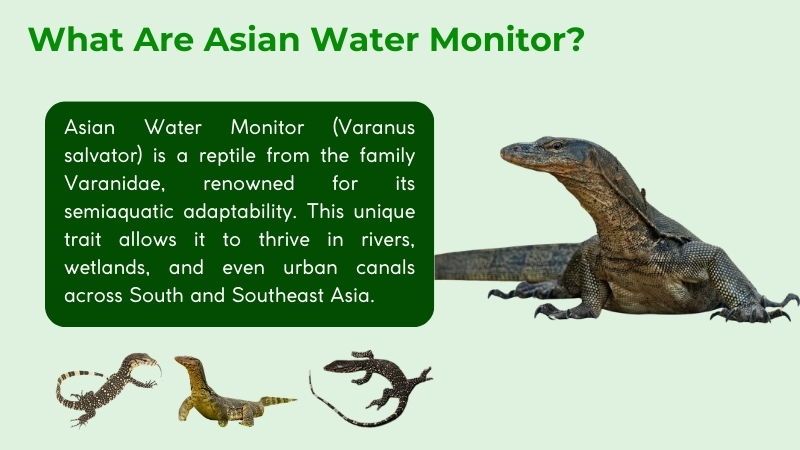
What Does the Asian Water Monitor Look Like?
The Asian water monitor (Varanus salvator) presents a formidable appearance, characterized by a robust, muscular physique and a streamlined build optimized for both aquatic and terrestrial movement [1, 8]. Its coloration ranges from dark olive to blackish, featuring irregular yellow spots or distinct transverse bands on its back and sides; these vibrant markings tend to diminish in intensity as the animal matures [1, 8, 14].
The ventral surfaces are typically paler and may exhibit fewer markings, providing a degree of camouflage within its varied environments, from sun-dappled mangroves to murky riverbeds [8].
This species exhibits seven prominent physical characteristics contributing to its survival and predatory capabilities: its body shape, skin, head and facial features, teeth, limbs, tail, and specialized sensory structures. These elements collectively define its formidable presence and adaptive capabilities within diverse ecosystems [8].
- Muscular Body: The Asian water monitor possesses a streamlined body shape designed for agile movement through water and dense vegetation [1, 8]. Its powerful trunk supports active pursuit of prey and swift escapes from predators.
- Scaly Skin: Its dark olive to blackish skin is adorned with irregular yellow spots or bands that serve as camouflage, blending into diverse habitats [1, 8]. The coarse, keeled scales provide robust protection against environmental hazards [8].
- Tapered Head: The elongated, conical head features a tapered snout that aids in exploring crevices and grasping prey [8]. Medium-sized, dark eyes with round pupils offer keen vision, complemented by a protective nictitating membrane for underwater activity [8]. Slit-like, lateral nostrils contribute to acute olfaction, essential for detecting food and threats [8].
- Serrated Teeth: The monitor’s strong jaw houses 60-70 serrated, recurved teeth, primarily adapted for firmly gripping and tearing the flesh of prey or carrion [8]. These teeth are crucial for their carnivorous diet, enabling efficient consumption of diverse food sources.
- Strong Limbs: Four robust limbs with long digits and sharp claws facilitate climbing, digging, and terrestrial locomotion [1, 8]. Webbed toes on its feet enhance propulsion, making it an efficient swimmer [8].
- Powerful Tail: The long, laterally compressed, and muscular tail, extending up to 1.5 times the body length, is a multifunctional appendage [8]. It acts as a primary means of propulsion in water, provides balance on land, and serves as a formidable defensive weapon capable of delivering powerful strikes [1, 8].
- Forked Tongue: A forked tongue is used for chemoreception, enabling the monitor to detect chemical cues in its environment and identify prey or potential dangers with precision [8].
Sexual dimorphism in Asian water monitors is subtle, primarily manifesting in size; males are typically larger, sometimes up to 10% greater in length and weight, and may possess broader heads than females [8]. Females might also exhibit more subtle body markings compared to their male counterparts [8].
Beyond their striking appearance, the sheer size of the Asian water monitor commands attention. Discovering more about their growth and dimensions helps paint a complete picture of these magnificent reptiles.
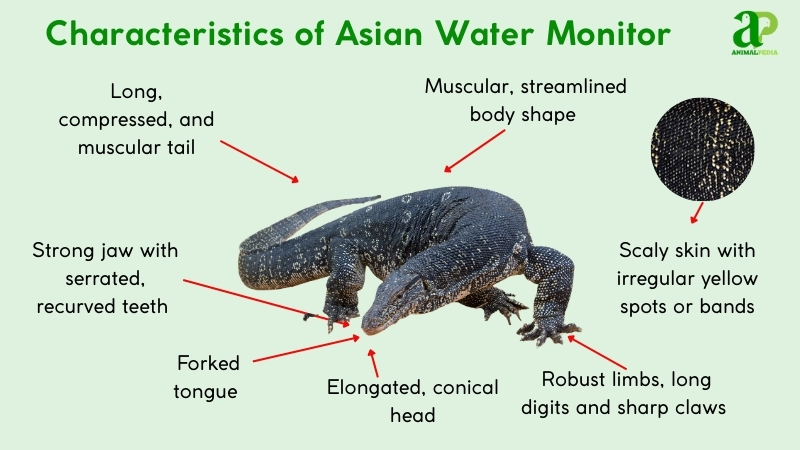
How Big Is The Asian Water Monitor?
Adult Asian water monitors typically attain a total length ranging from 59 to 79 inches (150-200 cm), with an average weight between 44 to 55 pounds (20-25 kg) [8, 20]. However, some individuals can reach significantly larger dimensions, with record sizes exceeding these averages [20].
The size differences between males and females are generally minor, though males are often slightly larger than females [8].
| Trait | Male (Average) | Female (Average) | Record Size (Overall) |
| Length | 65-79 inches (165-200 cm) | 59-70 inches (150-178 cm) | Up to 10.5 feet (3.2 m) [20] |
| Weight | 50-71 pounds (23-32 kg) | 44-55 pounds (20-25 kg) | Up to 110 pounds (50 kg) [20] |
Asian water monitors exhibit rapid growth during their initial years. Hatchlings are small, measuring approximately 10-12 inches (25-30 cm) and weighing 0.2-0.4 pounds (0.1-0.2 kg) [8]. They progress to juvenile stages, reaching about 39 inches (100 cm) by 2-3 years of age, and achieve sexual maturity between 4-5 years [8].
Now that we have explored their impressive size, it is equally important to understand where these fascinating creatures make their home. The varied habitats they occupy shed light on their adaptability.
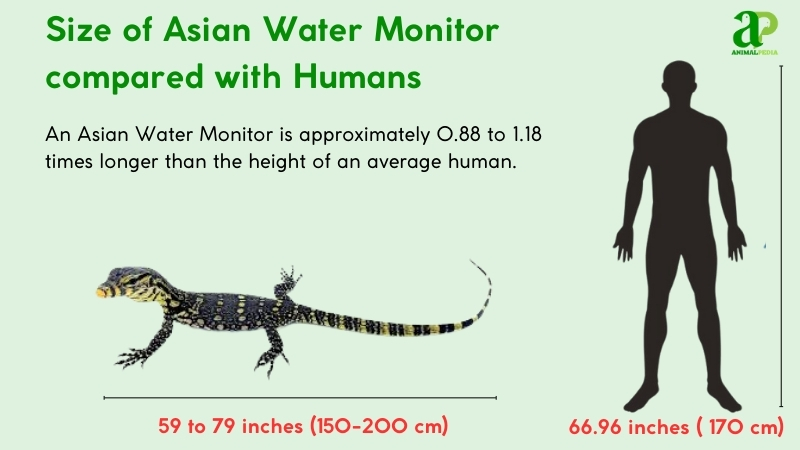
Where Does The Asian Water Monitor Live?
The Asian water monitor (Varanus salvator) inhabits a vast geographic range across South and Southeast Asia, adapting to various aquatic and semi-aquatic environments [1, 6, 23]. Their distribution extends from India and Bangladesh through Sri Lanka, southern China, Myanmar, Thailand, and Vietnam, continuing into Malaysia, Indonesia (including Sumatra, Java, and Borneo), and the Philippines, encompassing numerous islands, such as the Andaman and Nicobar groups [1, 23].
These reptiles thrive in tropical forests, dense mangroves, expansive swamps, and along the banks of rivers and urban canals, frequently found in agricultural fields and rice paddies [1, 6, 8].
Asian water monitors require warm temperatures, ideally between 77-95°F (25-35°C), coupled with high humidity ranging from 60-80% [7]. Wet seasons are particularly important for their breeding cycles, as they significantly influence reproductive success [7].
While moderately territorial, they mark their domains using scent glands and defend their space through visual displays or chases, especially in areas with concentrated food resources [26, 30]. Their presence in urban wetland environments, such as those found in Bangkok, highlights their adaptability to human-modified landscapes, where they successfully forage and bask [27].
Understanding their natural territory naturally leads to questions about their daily routines and interactions within these environments. How do these large reptiles navigate their world and find sustenance?
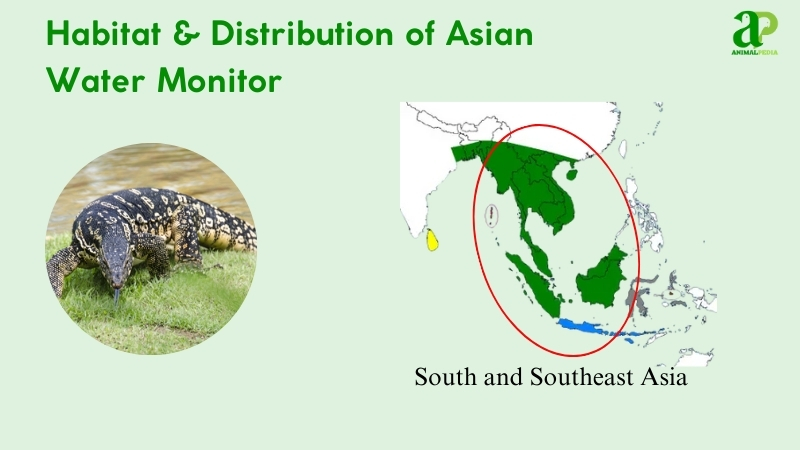
How Does the Asian Water Monitor Behave?
The Asian water monitor (Varanus salvator) exhibits complex behaviors driven by its predatory nature and adaptability to diverse environments, encompassing highly efficient foraging strategies, versatile locomotion, and distinct daily and seasonal activity patterns [8, 27].
- Diet and Feeding: These opportunistic carnivores primarily consume carrion, alongside live fish, frogs, rodents, and birds, utilizing acute senses to detect and pursue prey [8].
- Movement and Abilities: Agile swimmers, adept climbers, and competent terrestrial runners, monitors exhibit a range of movements tailored for hunting, escape, and habitat exploration [1, 8].
- Daily/Seasonal Patterns: Their activity peaks during morning and afternoon, focusing on foraging and basking, with behaviors shifting seasonally to align with breeding and environmental conditions [27, 26].
This section further explores these behavioral categories, starting with their dietary habits and feeding ecology.
Diet and Feeding
Asian water monitors (Varanus salvator) primarily consume carrion, positioning them as critical opportunistic scavengers within their ecosystems [8]. Their diet also encompasses a diverse array of live prey, including fish and frogs (approximately 30%), rodents and birds (about 20%), and various invertebrates or eggs (around 10%) [8]. These reptiles are active hunters, pursuing prey both on land and in water, and are proficient at ambushing unsuspecting animals [8].
They use their forked tongues for chemoreception, effectively detecting chemical cues to locate food sources, including hidden carrion [8]. Their feeding patterns reflect their opportunistic nature, and they readily consume whatever is available in their environment [8]. A notable adaptation in monitors is their genome, which reveals unique antibacterial properties in their blood coagulation and innate immune systems, allowing them to resist infections that might arise from consuming carrion [25].
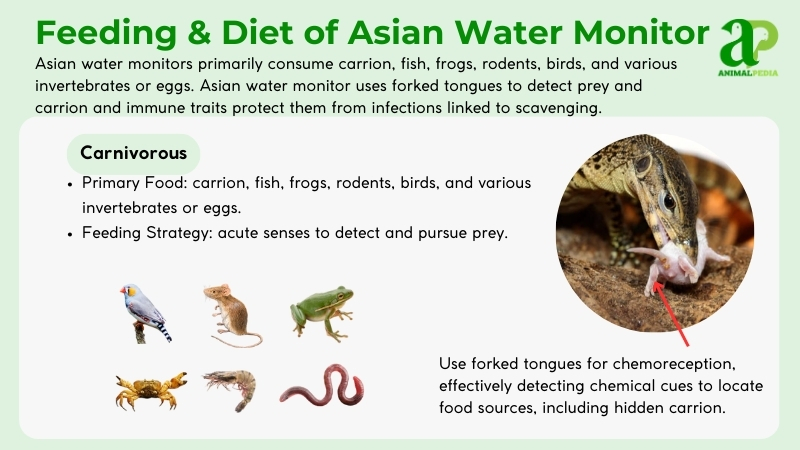
Are Asian Water Monitors Venomous?
Asian water monitors are considered venomous, possessing venom glands that aid in subduing prey and can cause localized effects in humans [10]. Research indicates the presence of these venom glands, with their secretions contributing to the symptoms observed after a bite [10]. However, debates exist, with some attributing bite effects solely to bacterial infections rather than true venom [10].
A bite from an Asian water monitor can result in deep lacerations and carries a risk of bacterial infection, such as Salmonella, though the venom itself is generally mild, causing swelling and localized pain, but is not typically fatal [8].
When encountering an Asian water monitor, it is advisable to maintain distance and avoid provocation; they are generally wary of humans and prefer to flee [8]. Their primary defensive behaviors include tail whipping, biting, and clawing, often accompanied by hissing or bluff displays to deter perceived threats [8].
Movement and Abilities
Asian water monitors move with versatile locomotion, employing a range of primary modes including swimming, running, climbing trees, and burrowing [1, 8]. Each movement type is adapted for specific ecological needs.
- Swimming: As semiaquatic reptiles, they are exceptional swimmers, using their powerful, laterally compressed tails for propulsion [1, 8]. They can sustain speeds of 6-9 miles per hour (10-15 km/h) over distances up to 0.6 miles (1 km) [8]. Monitors can also remain submerged for up to 30 minutes while hunting [8].
- Running: On land, monitors can exhibit bursts of speed, reaching up to 12-15 miles per hour (20-25 km/h) over short distances of 100-200 meters (330-660 feet) [8]. Their strong limbs and powerful musculature enable rapid terrestrial movement for escape or pursuit.
- Climbing: Equipped with strong limbs and sharp claws, Asian water monitors are proficient climbers, ascending trees to bask, hunt for arboreal prey, or escape floodwaters [6, 8].
- Burrowing: Their robust claws also facilitate burrowing, which they use to create dens for shelter, nesting, and thermoregulation [8].
These reptiles possess special adaptations that enhance their survival, such as a parietal, or “third eye,” capable of detecting changes in light and dark, aiding in predator detection [8]. Their physical capabilities are also augmented by their strength and agility, enabling them to navigate complex environments effectively [8].
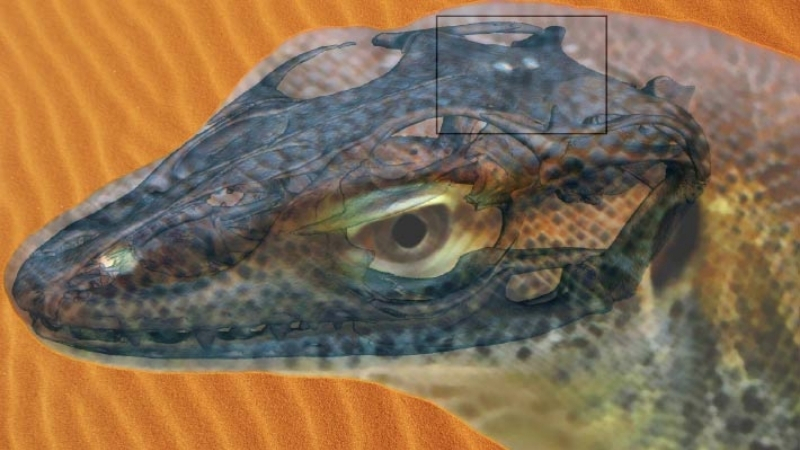
Daily/Seasonal Patterns
Asian water monitors are primarily diurnal, meaning they are active during the day, with their activity cycles typically beginning in the morning and subsiding in the late afternoon [27]. Their daily activity cycle is characterized by distinct periods.
- Morning (approximately 7:00 AM – 11:00 AM): Activity often begins with basking to raise body temperature, followed by initial foraging for food [27].
- Mid-day (approximately 11:00 AM – 2:00 PM): Activity may decrease slightly during the hottest parts of the day, with monitors seeking shade or resting [27].
- Afternoon (approximately 2:00 PM – 6:00 PM): A second peak in foraging activity occurs, often continuing until dusk [27].
Seasonally, Asian water monitors show heightened activity during warmer, wetter periods, which coincide with their breeding season, typically from April to October [1, 26].
During this time, males engage in wrestling combat and courtship behaviors, including tongue-flicking, to attract mates [1, 26]. While they do not undergo true migration, their movements can be influenced by environmental factors such as floods, prompting them to climb trees to find refuge in elevated areas [6].
With a clear understanding of their behaviors, how do these solitary reptiles perpetuate their species? Exploring their reproductive strategies unveils another layer of their life cycle.
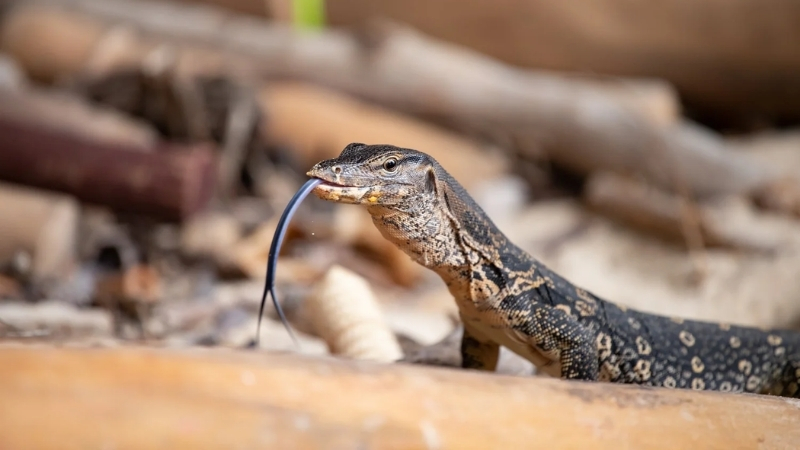
How Does the Asian Water Monitor Reproduce?
Asian water monitors (Varanus salvator) reproduce through oviparity, meaning females lay eggs rather than giving birth to live young [1]. Their mating season typically occurs during warmer, wetter periods, extending from April to October [1, 26]. During this time, males engage in competitive behaviors, often involving wrestling combat, to establish dominance and secure mating opportunities [1, 26].
Courtship rituals also include tongue-flicking, a chemosensory behavior used by males to assess a female’s reproductive state [1, 26]. Following successful mating, females lay clutches of 15-40 eggs in nests, which can include burrows or concealed areas [1, 8]. The eggs undergo an extended incubation period, lasting approximately 6-10 months, with temperature influencing hatchling development [1, 8].
Parental care is limited; females may guard their nests briefly, but no extended care is provided after the eggs hatch [1, 8]. These seasonal breeding patterns are often triggered by environmental cues, such as rainfall and rising temperatures, which ensure optimal conditions for offspring development [8].
The continuation of their species depends on successful reproduction, but how long do these formidable lizards live to contribute to their ecosystems? Understanding their lifespan reveals the duration of their impact.
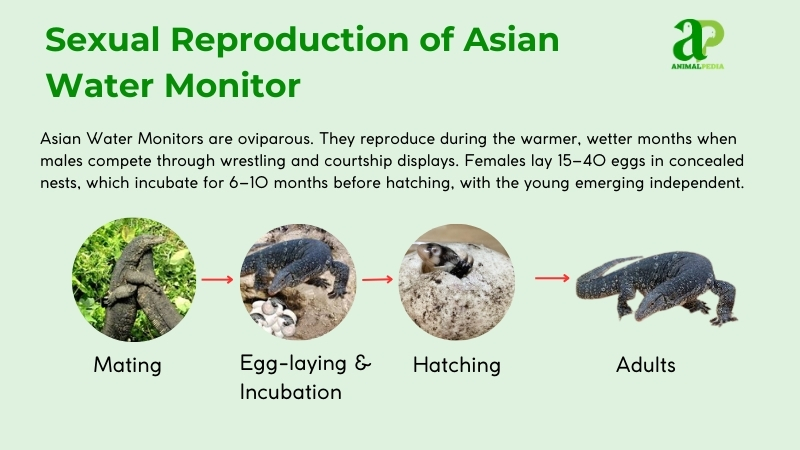
How Long Does The Asian Water Monitor Live?
Asian water monitors (Varanus salvator) live approximately 11-15 years on average in the wild [8, 30]. In captivity, their lifespan tends to be longer, averaging 15-20 years, with some individuals reaching up to 25 years due to consistent food supply, veterinary care, and protection from predators [7].
These reptiles typically reach sexual maturity between 4-5 years of age, marking their transition into adulthood where they become reproductively active [8]. Several factors influence their longevity, including diet quality, which provides essential nutrients for growth and health, and habitat stability, as urban pollution can shorten life spans [7].
Predation by saltwater crocodiles, large raptors, and pythons also significantly impacts wild populations, alongside diseases caused by parasites such as helminths [8, 24]. Human activities, such as habitat destruction and overhunting for trade, also contribute to varying lifespans across their range [4].
Considering their significant presence and ecological roles, one might wonder about the direct and indirect impacts these monitors have on human populations. Are they a help or a hindrance in our shared environments?
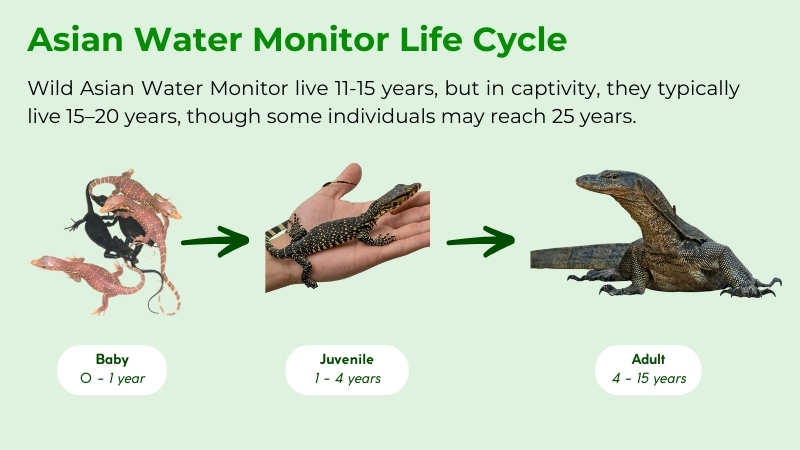
Is The Asian Water Monitor Beneficial to Humans?
The Asian water monitor (Varanus salvator) is generally considered beneficial to humans, primarily through its ecological roles and, in some contexts, its cultural significance [8]. As a prolific scavenger, the species aids significantly in waste management by consuming carrion, thereby preventing the spread of diseases within ecosystems [8].
Furthermore, they act as natural pest controllers, preying on rodents and frogs that can impact agricultural areas [8, 17]. In certain regions, the Asian water monitor holds cultural significance; for example, in Thai folklore, it is known as “tua nguen tua tong,” symbolizing wealth, and in India, it is revered for its historical role as a potential warning sign for crocodiles [5, 8]. Ecotourism also benefits from their presence, attracting visitors interested in wildlife observation [8].
While their beneficial roles are clear, a critical question remains regarding their long-term survival. What is the current conservation status of the Asian water monitor, and what challenges does it face?
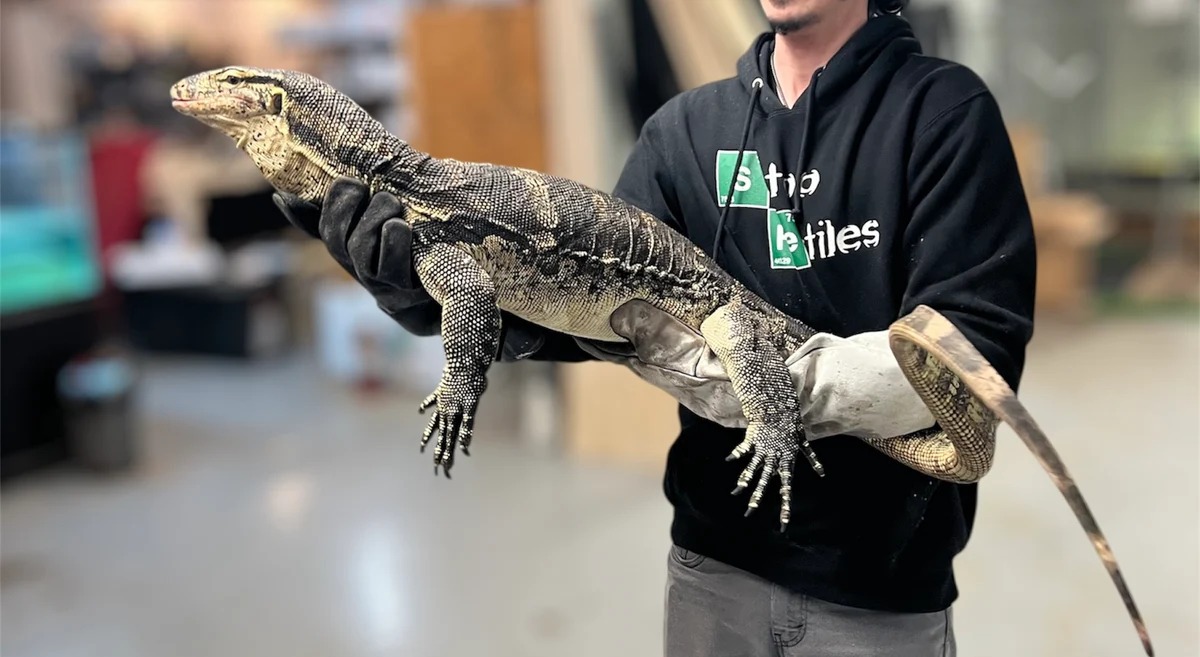
Is The Asian Water Monitor Endangered?
The Asian water monitor (Varanus salvator) is currently classified as Least Concern on the IUCN Red List, indicating that the global population is not immediately threatened [8, 4]. Despite this classification, localized populations face significant pressures. The primary threats include overhunting for the skin and meat trade, habitat destruction due to deforestation and urban expansion, and pollution of their aquatic environments [8, 32, 4].
This species plays a crucial ecological role as a scavenger, contributing to ecosystem health by consuming decaying matter [8, 25]. Individuals can support their survival by adhering to CITES regulations regarding wildlife trade, advocating for protected areas, and participating in citizen science initiatives that monitor populations and habitats [11, 28]. These actions help mitigate threats and promote a balanced coexistence.
Beyond their conservation status, the Asian water monitor holds many surprising traits and behaviors that captivate naturalists and casual observers alike. Delve into some truly fascinating facts about these reptiles.
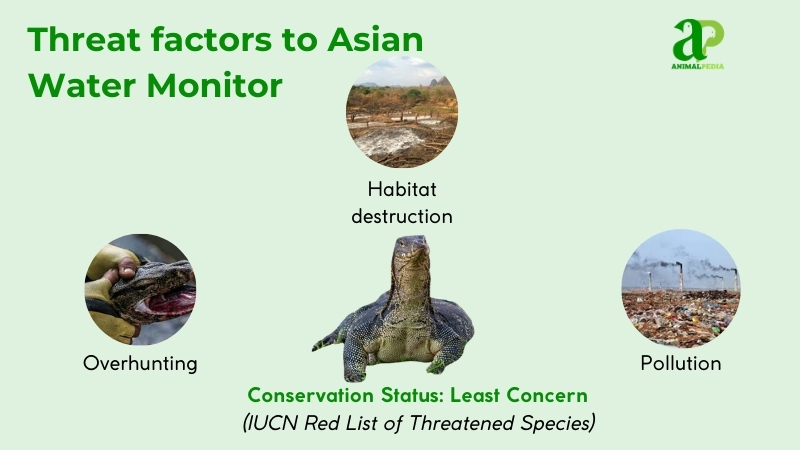
Fascinating Facts About Asian Water Monitor
Asian water monitors are creatures of adaptability and unique biological traits. Their existence reveals surprising aspects of reptile behavior and physiology within their diverse habitats.
- Extended Underwater Forays: The Asian water monitor exhibits an impressive capacity to remain submerged for up to 30 minutes while actively hunting beneath the water’s surface [8]. This allows for stealthy predation on aquatic prey and effective concealment from threats.
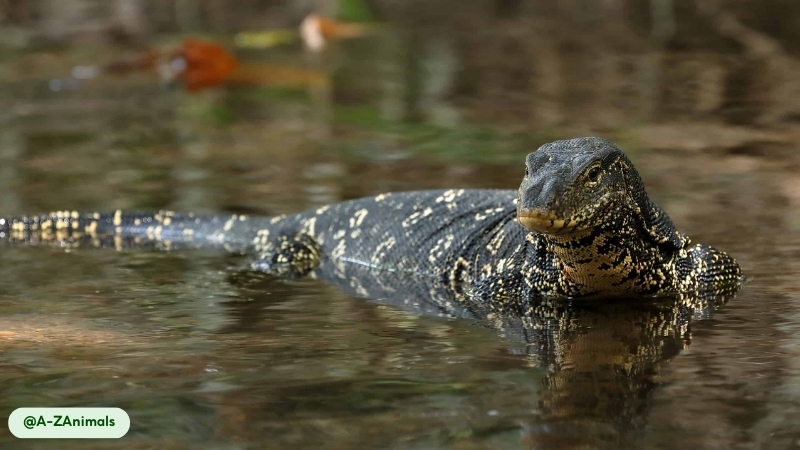
- Parietal Eye Presence: These monitors possess a parietal eye, sometimes referred to as a “third eye,” located on the top of their head [8]. While not a complex visual organ, it plays a role in detecting changes in light intensity, aiding in thermoregulation and predator avoidance.
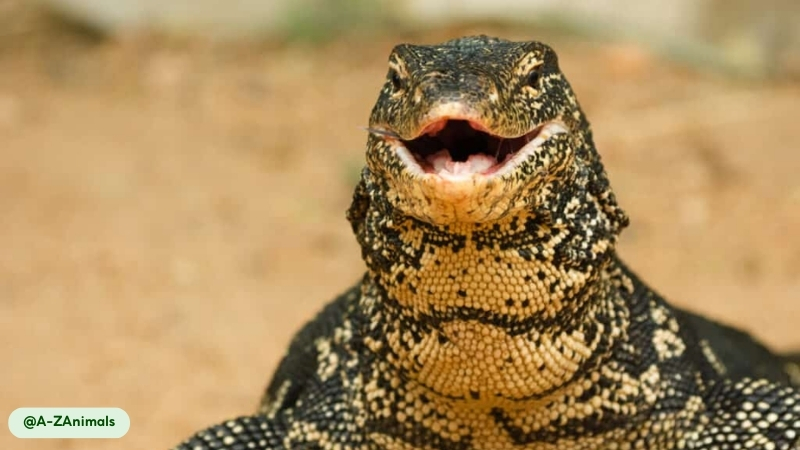
- Resourceful Urban Trappers: In urban environments, Asian water monitors have been observed using discarded containers as rudimentary traps for small prey [6]. This behavior highlights their intelligence and adaptability, though it also carries the risk of entanglement.
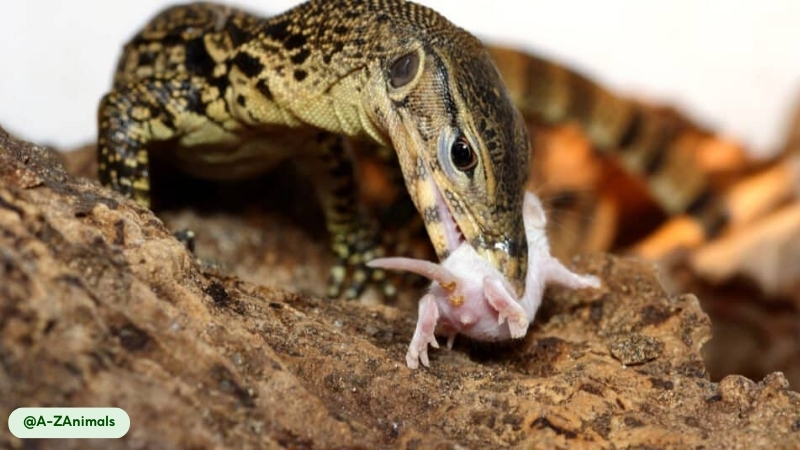
- Cooperative Hunting Tactics: Uniquely, Asian water monitors in urban settings sometimes exhibit group hunting behavior for fish [28]. This cooperative strategy allows them to corner and capture prey more effectively than solitary hunting.
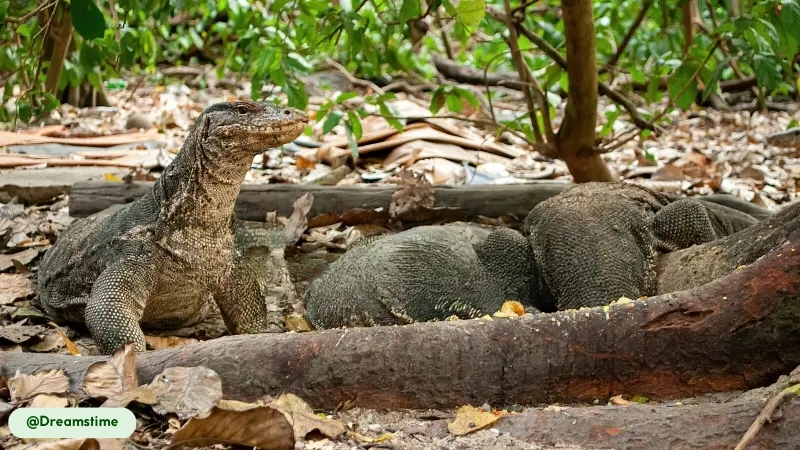
- Innate Antibacterial Defenses: The genome of Varanus salvator reveals unique antibacterial adaptations within its blood coagulation and innate immune systems [25]. This biological advantage likely contributes to their resilience against infections, especially when consuming carrion.
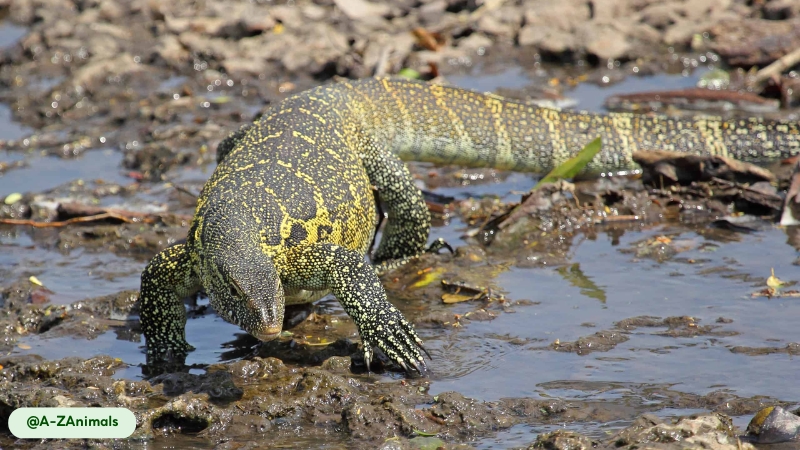
- Florida’s Unexpected Invader: Since 1978, the Asian water monitor has been established in Florida, although its ecological impact on native species remains under assessment [23]. Their presence raises questions about potential ecosystem shifts in non-native ranges.
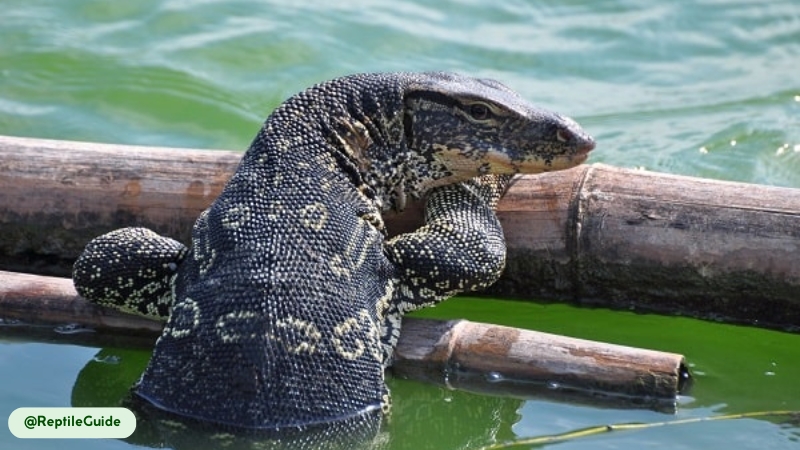
- Mating Harems: During the breeding season, male Asian water monitors often establish and maintain harems of females [1, 26]. This social structure in mating is a competitive strategy for reproductive success among the species.
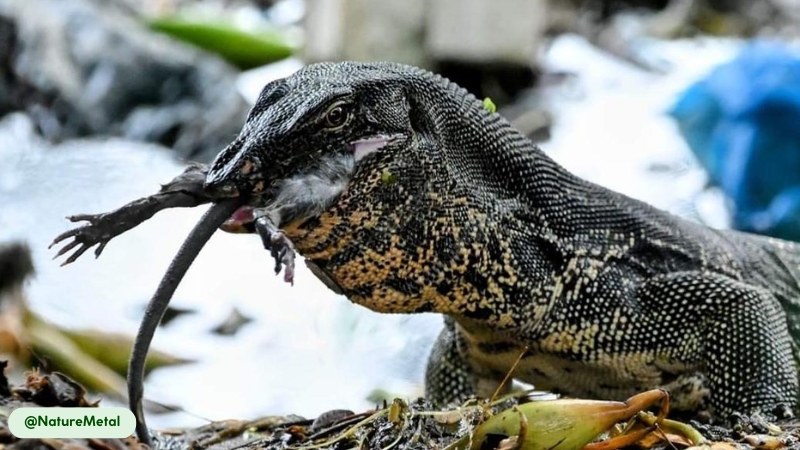
- Urban Waste Clean-up Crew: Within cities, Asian water monitors are known to consume human food scraps, contributing to natural waste cleanup [27]. This behavioral flexibility allows them to thrive in human-dominated landscapes.
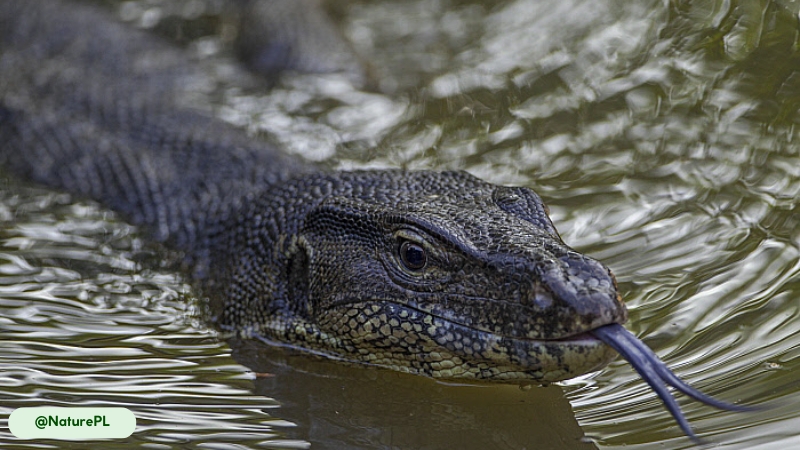
- Arboreal Flood Escapes: When faced with rising water levels during floods, these adaptable reptiles readily climb trees to escape [6]. This demonstrates a crucial survival strategy, showcasing their climbing prowess beyond just hunting.
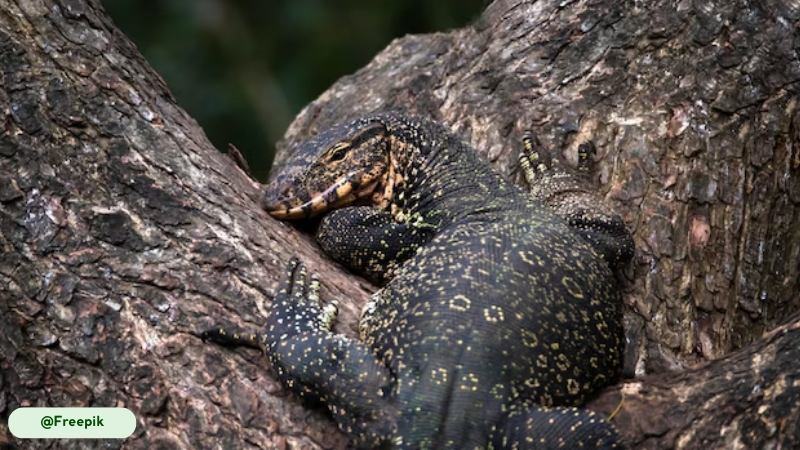
- High Parasite Diversity: Wild populations of Asian water monitors exhibit a high level of parasite diversity [8]. This biological insight provides important data for understanding the health and disease ecology of the species within its natural habitats.
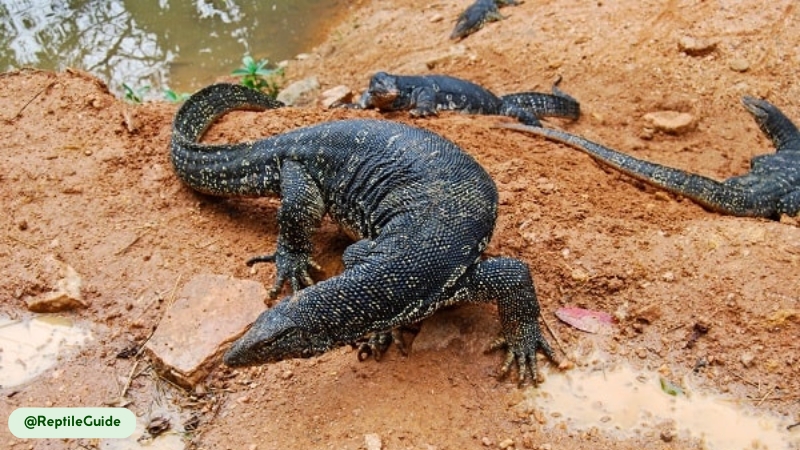
With a deeper appreciation for their unique characteristics and ecological contributions, many common inquiries arise about these creatures. Let’s address some frequently asked questions.
Frequently Asked Questions About Asian Water Monitor
Can An Asian Water Monitor Kill You?
An Asian water monitor can inflict severe injury, but fatalities are rare. Their bites cause deep lacerations and carry a risk of bacterial infection like Salmonella; while venom glands are present, the venom is typically mild, causing localized swelling and pain rather than systemic threat [8, 10].
Are Asian Water Monitors Good Pets?
No, Asian water monitors are not generally recommended as pets for beginners. Their substantial size, potential aggression, and complex care requirements, including large enclosures (minimum 12x6x6 feet or 3.7×1.8×1.8 meters) and specific environmental conditions, make them challenging to manage [8].
Do Asian Water Monitors Eat Humans?
No, Asian water monitors do not typically eat humans. Their diet primarily consists of carrion, fish, rodents, and birds [8]. While large and predatory, they generally avoid humans and only bite defensively if provoked or cornered [8].
How Long Can An Asian Water Monitor Hold Their Breath?
An Asian water monitor can hold its breath for up to 30 minutes while submerged [8]. This extended breath-holding capability is a critical adaptation for hunting aquatic prey and for evading predators by remaining concealed underwater.
How Fast Can An Asian Water Monitor Run?
An Asian water monitor can run at speeds up to 12-15 miles per hour (20-25 km/h) on land for short bursts [8]. This speed allows them to pursue agile prey or rapidly escape from perceived threats across their terrestrial habitats.
Conclusion
The Asian water monitor (Varanus salvator) stands as a testament to nature’s adaptability, thriving across diverse Asian landscapes from bustling cities to serene wetlands. This formidable reptile, with its impressive size, versatile behaviors, and critical ecological functions as a scavenger and pest controller, plays an indispensable role in maintaining healthy ecosystems.
While generally shy, its physical capabilities and defensive mechanisms warrant respect. Its conservation status, currently “Least Concern,” underscores the importance of ongoing efforts to protect its habitats and manage trade to ensure its continued presence for generations.
Animal Pedia aims to provide comprehensive, accurate insights into the animal kingdom. We invite you to explore more fascinating species, delve into their unique worlds, and expand your understanding of Earth’s incredible biodiversity on our website.







